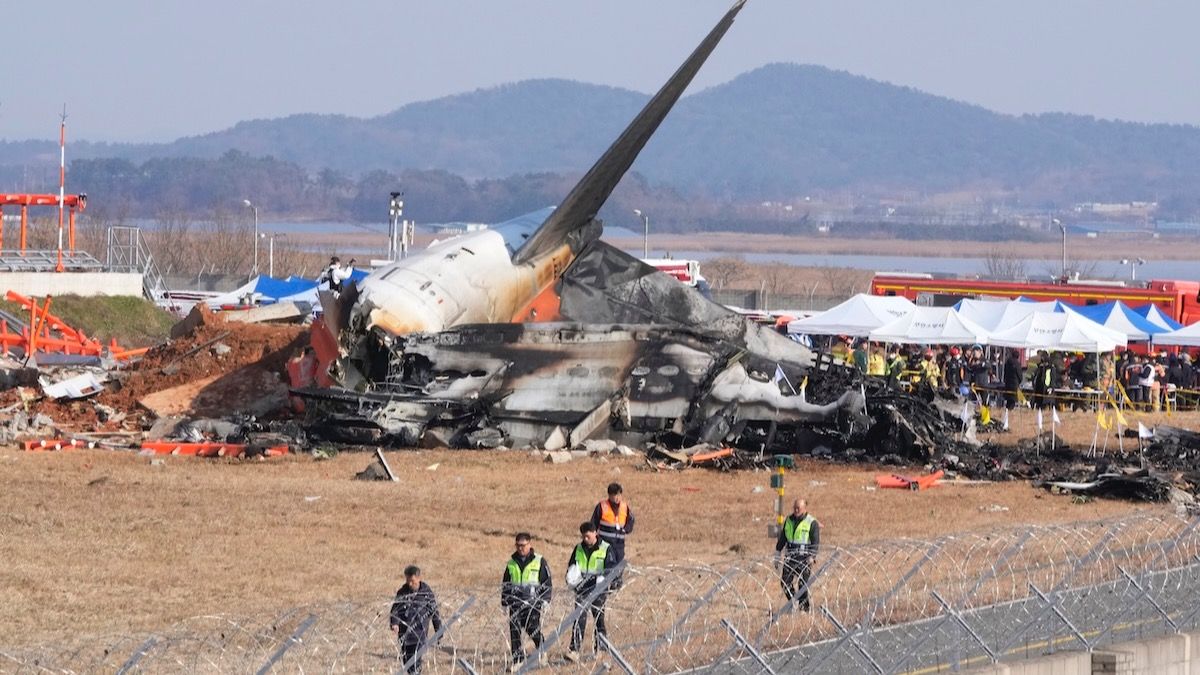Seoul: A day after South Korea’s deadliest plane crash, another Jeju Air flight from Seoul was forced to return to the airport shortly after takeoff due to a landing gear problem, the airline confirmed. The latest incident involved a Boeing 737-800, the same model as the Jeju Air plane that crashed on Sunday, killing 179 people. Jeju Air Flight 7C101 departed Seoul’s Gimpo International Airport for Jeju Island at around 6:37 a.m. However, shortly after takeoff, a signal indicating a landing gear issue was detected on the aircraft’s monitoring system. At 7:25 a.m., the flight was turned around and returned to Gimpo.
“Shortly after takeoff, a signal indicating a landing gear issue was detected on the aircraft’s monitoring system,” said Song Kyung-hoon, head of the management support office at Jeju Air, during a news conference. At 6:57 a.m., the captain communicated with ground control, and after taking additional measures, the landing gear returned to normal operation. “However, the decision was made to return to the airport for a thorough inspection of the aircraft,” Song explained.
According to local media, 21 passengers decided not to board an alternative flight to Jeju, citing safety concerns and other factors. Jeju Air operates a fleet of 41 planes, with 39 of them being Boeing 737-800 aircraft.
South Korea Plane Crash
Meanwhile, South Korea has vowed thorough investigations to find what caused a plane crash that killed 179 people, saying that it will also inspect all Boeing 737-800 aircraft operated by the country’s airlines. Sunday’s crash, the nation’s deadliest aviation disaster in decades, has sent a shock wave through South Korean society, which is already facing a political crisis that led to the successive impeachments of the country’s top two officials — President Yoon Suk Yeol and Prime Minister Han Duk-soo.
What happened and what might have caused it?
Jeju Air flight 7C 2216 had departed from Bangkok and was making its landing at Muan International Airport in southern South Korea. After an initial failed landing attempt, the Boeing 737-800 plane received a bird strike warning from the ground control center. The pilot then issued a distress signal before the plane came down with its front landing gear closed, overshot the runway, slammed into a concrete fence and burst into a fireball.
Observers say videos of the crash showed the plane was suffering from suspected engine trouble, but the landing gear malfunction was likely the main reason for the crash.
South Korean Transport Ministry officials said Monday they will examine whether the fence the plane hit — which housed a set of antennas designed to guide aircraft safely during landings — should have been made with lighter materials that would break more easily upon impact. They said they were also trying to establish whether there were any communication problems between air traffic controllers and the pilot.
Ministry officials said Monday the plane’s flight data and cockpit audio recorders were moved to a research center at Seoul’s Gimpo International Airport ahead of their analysis. Ministry officials earlier said it would take months to complete the investigation of the crash.
Does the crash represent another setback for Boeing?
The crash wrapped up a troubling 2024 for U.S. aviation giant Boeing, which has grappled with safety problems, a machinists strike and plunging stock prices.
Experts say the 737-800 aircraft is a more proven model than the company’s much-maligned 737 Max jetliners, which were linked to fatal crashes in 2018 and 2019. Still, South Korean authorities said they’ll conduct safety inspections on all of the 737-800s operated by domestic airlines, including 39 by Jeju Air.
Representatives from Boeing and the U.S. National Transportation Safety Board were to travel to Seoul to participate in the South Korean investigation.
On Monday, another Boeing 737-800 plane operated by Jeju Air returned to the Gimpo airport shortly after takeoff when the pilot detected a landing gear issue. Jeju Air said the issue was resolved through communication with a land-based equipment center but the pilot decided to return to Gimpo as a precautionary measure.
South Korea: Another Jeju Air Flight Hit by Landing Gear Problem, Day After Deadliest Crash world-news World News | Latest International News | Global World News | World Breaking Headlines Today




